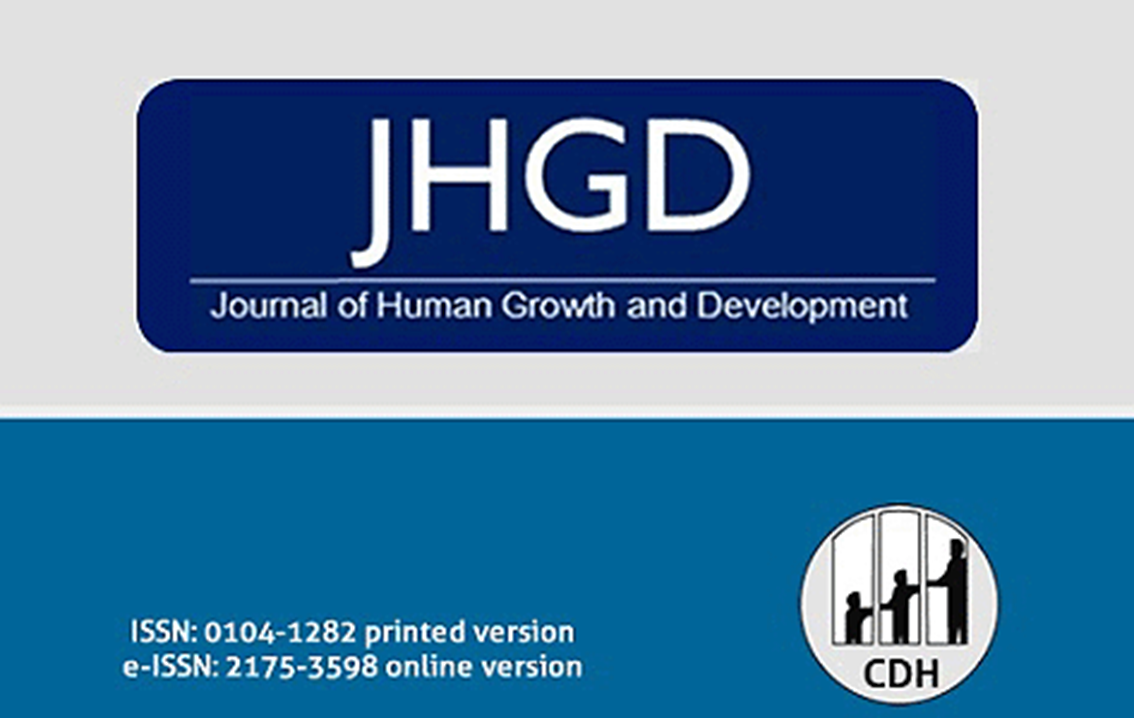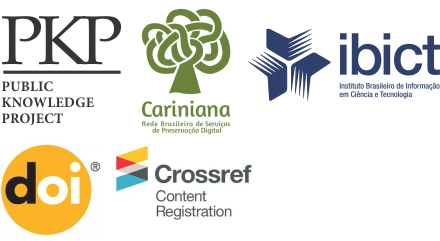Bullying in school environment: the educators’ understanding
DOI:
https://doi.org/10.7322/jhgd.v30.9969Keywords:
Bullying, Violence, Education, Family Relations, School Health ServicesAbstract
Introduction: Bullying is a type of violence between peers characterized by intentionality, repetition and imbalance of power between victims and aggressors. The occurrence of bullying in the school context impairs students' learning and healthy development.
Objective: To analyze the educators' understanding of bullying in the school environment.
Methods: Cross-sectional and qualitative study carried out with 16 educators (principals, deputy principals, pedagogical coordinators and teachers) from two public schools in a city in the interior of the state of Minas Gerais, Brazil. Semi-structured interviews that followed a script produced from indications in the specialized literature were conducted. The content of the interviews was recorded and transcribed in full. The interpretation of the data followed the assumptions of content analysis, in its thematic modality, considering the following steps: pre-analysis, exploration of the material, treatment of results and interpretation.
Results: Three thematic categories were identified: 1) The centrality of families in the problems of schools in relation to the conception of educators; 2) Beliefs that establish explanatory links for bullying; and 3) Intervention actions developed in relation to bullying. The results show that educators' beliefs hold families exclusively responsible for school problems and bullying. These conceptions stem from situations experienced in everyday life or from speeches of other education professionals who reiterate the absence of families and the little parental involvement in the issues of formal education of children as the major problem. Narratives of this nature denote the absence of an expanded understanding of bullying and its complexity. In addition to the family, the educators pointed out the influences of personality, the media and social standards as factors that can explain the involvement of students in bullying situations. For the participants, the most effective responses to minimize or respond adequately to school bullying require the participation of the family and some did not believe that the school could do something effective alone. In the data set, it was noticed that the educators' beliefs and understandings about the problem of bullying prevent measures aimed at school aspects, which are more proximal to the occurrence of bullying, from being implemented.
Conclusion: It is concluded that the investigated educators need to expand their understanding of bullying, in order to develop effective actions to face this phenomenon in schools, which also include the participation of families.
Downloads
References
2. Silva JL, Oliveira WA, Bazon MR, Cecílio S. Bullying na sala de aula: percepção e intervenção de professores. Arq Bras Psicol. 2013;65(1):121-37.
3. Sampaio JMC, Santos GV, Oliveira WA, Silva JL, Medeiros M, Silva MAI. Prevalência de bullying e emoções de estudantes envolvidos. Texto Contexto - Enferm. 2015;24(2):344-52. DOI: http://dx.doi.org/10.1590/0104-07072015003430013
4. Matos MMNG. Prevenção da violência interpessoal em meio escolar: os professores, as famílias e a comunidade também marcam uma diferença? J Child Adolesc Psychol. 2010;1(1):65-79.
5. Oliveira WA, Silva MAI, Silva JL, Mello FCM, Prado RR, Malta DC. Associations between the practice of bullying and individual and contextual variables from the aggressors’ perspective. J Pediatr (Rio J). 2016;92(1):32-9. DOI: http://dx.doi.org/10.1016/j.jped.2015.04.003
6. Silva JL, Oliveira WA, Carlos DM, Lizzi EAS, Rosário R, Silva MAI. Intervention in social skills and bullying. Rev Bras Enferm. 2018;71(3):1085-91. DOI: https://dx.doi.org/10.1590/0034-7167-2017-0151
7. Benedict FT, Vivier PM, Gjelsvik A. Mental health and bullying in the United States among children aged 6 to 17 years. J Interpers Violence. 2015;30(5):782-95. DOI: https://dx.doi.org/10.1177/0886260514536279
8. Silva JL, Oliveira WA, Bono EL, Dib MA, Bazon MR, Silva MAI. Associações entre bullying escolar e conduta infracional: revisão sistemática de estudos longitudinais. Psic Teor Pesq. 2016;32(1):81-90. DOI: http://dx.doi.org/10.1590/0102-37722016012241081090
9. Silva JL, Oliveira WA, Bazon MR, Cecilio S. Bullying: conhecimentos, atitudes e crenças de professores. Psico. 2014;45(2):147-56. DOI: http://dx.doi.org/10.15448/1980-8623.2014.2.12683
10. Trevisol MTC, Campos CA. Bullying: verificando a compreensão dos professores sobre o fenômeno no ambiente escolar. Psicol Esc Educ. 2016;20(2):275-84. DOI: https://dx.doi.org/10.1590/2175-353920150202964
11. Yoon J, Sulkowski ML, Bauman SA. Teachers’ responses to bullying incidents: effects of teacher characteristics and contexts. J Sch Violence. 2016;15(1):91-113. DOI: https://doi.org/10.1080/15388220.2014.963592
12. Zequinão M, Cardoso A, Silva JL, Medeiros P, Silva MA, Pereira B, et al. Academic performance and bullying in socially vulnerable students. J Hum Growth Dev. 2017;27(1):19-27. DOI: http://dx.doi.org/10.7322/jhgd.127645
13. Troop-Gordon W, Ladd G. Teachers’ victimization-related beliefs and strategies: Associations with students’ aggressive behaviour and peer victimization. J Abnorm Child Psychol. 2015;43(1):45-60. DOI: http://dx.doi.org/10.1007/s10802-013-9840-y
14. Marra CAS. Violência escolar: a percepção dos atores escolares e a repercussão no cotidiano da escola. São Paulo: Annablume, 2007.
15. Silva JL, Bazon MR. Prevenção e enfrentamento do bullying: o papel dos professores. Rev Educ Espec. 2017;30(59):615-28. DOI: http://dx.doi.org/10.5902/1984686X28082
16. Silva CS, Costa BLD. Opressão nas escolas: o bullying entre estudantes do ensino básico. Cad Pesqui. 2016;46(161):638-63. DOI: https://doi.org/10.1590/198053143888
17. Minayo MCS. O conceito de metodologia de pesquisa. In: Minayo MCS, Deslandes SF, Gomes R. Pesquisa Social: teoria, método e criatividade. Petrópolis: Vozes, 2016; p. 9-30.
18. Zangirolami-Raimundo J, Echeimberg JO, Leone C. Research methodology topics: Cross-sectional studies. J Hum Growth Dev. 2018;28(3):356-60. DOI: http://dx.doi.org/10.7322/jhgd.152198
19. Senra LX. Associação entre violência doméstica e o bullying em adolescentes da rede pública municipal de Juiz de Fora. Dissertação (Mestrado) - Faculdade de Psicologia da Universidade Federal de Juiz de Fora. Juiz de Fora: 2012.
20. Nicolaci-da-Costa AM. O campo da pesquisa qualitativa e o Método de Explicitação do Discurso Subjacente (MEDS). Psicol Reflex Crit. 2007;20(1):65-73. DOI: https://doi.org/10.1590/S0102-79722007000100009
21. Bardin L. Análise de conteúdo. Lisboa: Edições 70, 2010.
22. Oliveira WA, Silva JL, Sampaio JMC, Silva MAI. Saúde do escolar: uma revisão integrativa sobre família e bullying. Ciênc Saúde Coletiva. 2017;22(5):1553-64. DOI: https://doi.org/10.1590/1413-81232017225.09802015
23. Shetgiri R, Lin H, Avila RM, Flores G. Parental characteristics associated with bullying perpetration in US children aged 10 to 17 years. Am J Public Health. 2012;102(12):2280-6. DOI: https://doi.org/10.2105/AJPH.2012.300725
24. Silva JL, Bazon MR. Educação escolar e conduta infracional em adolescentes: revisão integrativa da literatura. Estud Psicol. 2014;19(4):278-87. DOI: https://doi.org/10.1590/S1413-294X2014000400005
25. Boarini ML. Indisciplina escolar: uma construção coletiva. Psicol Esc Educ. 2013;17(1):123-31. DOI: http://doi.org/10.1590/S1413-85572013000100013
26. Perron T. Peer victimisation: strategies to decrease bullying in schools. Br J Sch Nurs. 2013;8(1):25-9. DOI: https://doi.org/10.12968/bjsn.2013.8.1.25
27. Foster H, Brooks-Gunn J. Neighborhood, family and individual influences on school physical victimization. J Youth Adolescence. 2013;42(10):1596-610. DOI: http://doi.org/10.1007/s10964-012-9890-4
28. Sevda A, Sevim S. Effect of high school students’ self concept and family relationships on peer bullying. Rev Bras Promoç Saúde. 2012;25(4):405-12. DOI: http://dx.doi.org/10.5020/2539
29. Silva MAI. Bullying entre pares na escola: desafio aos enfermeiros que atuam na atenção básica à saúde. Rev Eletr Enf. 2013;15(3):603-4. DOI: http://dx.doi.org/10.5216/ree.v15i3.24527







